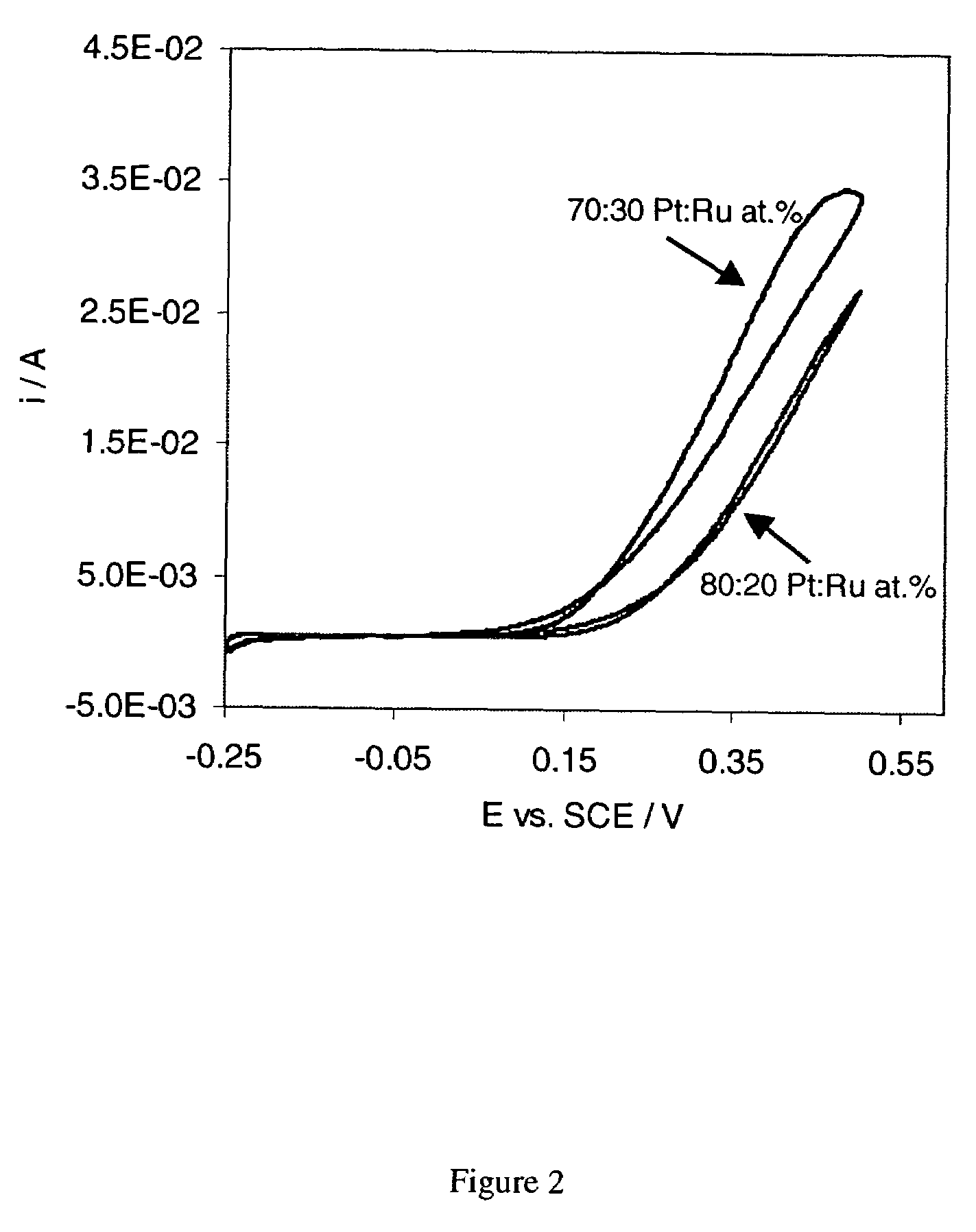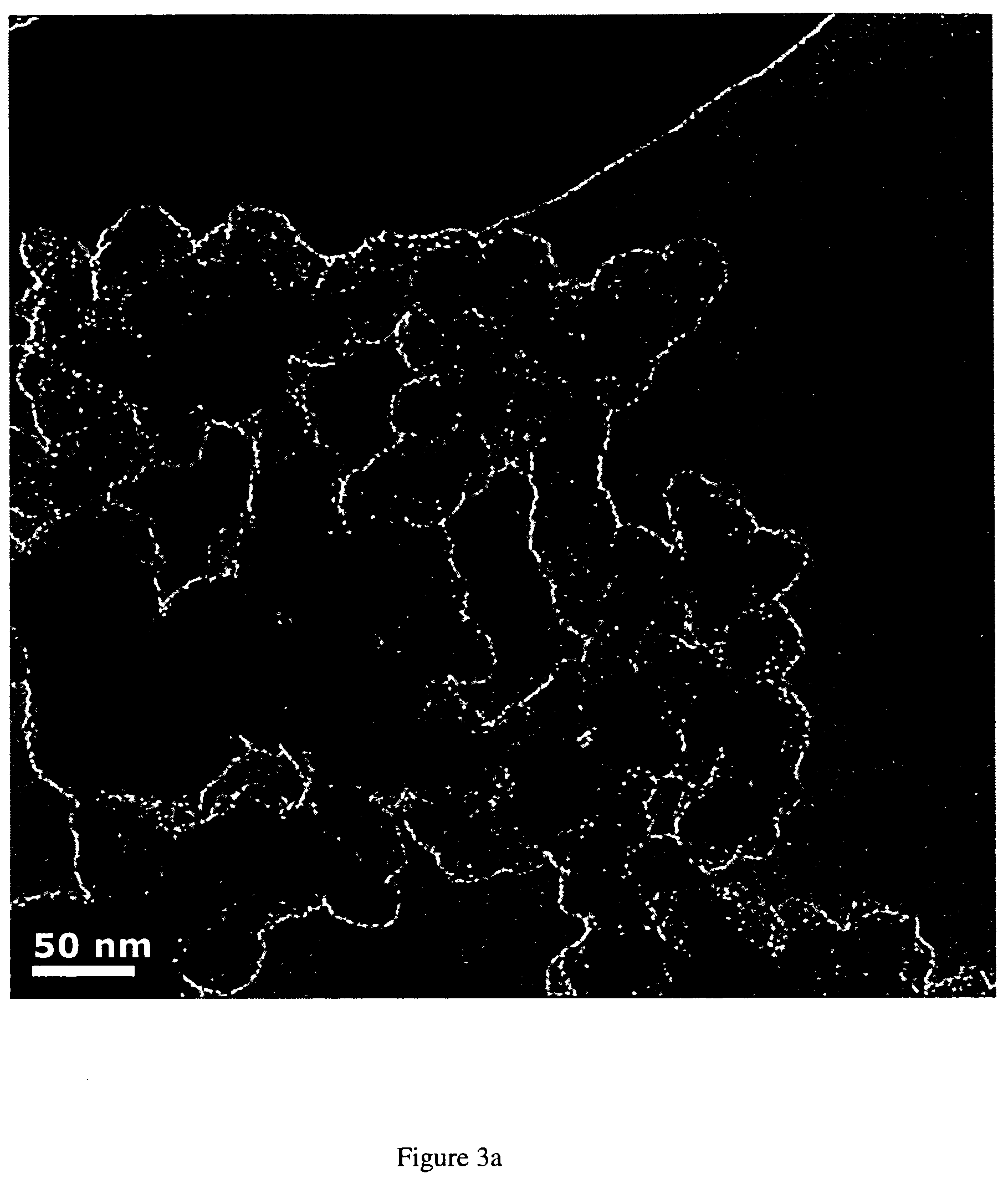Platinum based nano-size catalysts
- Summary
- Abstract
- Description
- Claims
- Application Information
AI Technical Summary
Benefits of technology
Problems solved by technology
Method used
Image
Examples
Embodiment Construction
[0055]According to the process of the invention, high surface area Pt based catalysts are synthesized that exhibit beneficial catalytic activities towards the oxidation of H2, CH3OH and CO as well as the reduction of O2. Pt based catalysts that contain suitable ad-metals and / or ad-metal oxides such as bimetallic PtRu catalysts exhibit a catalytic advantage for the electrochemical CH3OH and CO oxidation reaction as compared to Pt only. The catalytic advantage is believed to be due to a so called bi-functional mechanism6 and is seen in lower CH3OH and CO oxidation potentials and higher activity for the oxidation reaction, particularly at low potentials and a lower degree of catalyst poisoning than observed in6 for Pt only. As seen in the figure, using the process described here, PtRu catalysts can be directly synthesized and / or subsequently supported onto carbon blacks (acetylene black or Vulcan XC-72R) that show higher activities per weight Platinum for the electrochemical CH3OH oxid...
PUM
| Property | Measurement | Unit |
|---|---|---|
| Size | aaaaa | aaaaa |
| Size | aaaaa | aaaaa |
| Particle size | aaaaa | aaaaa |
Abstract
Description
Claims
Application Information
 Login to View More
Login to View More - R&D
- Intellectual Property
- Life Sciences
- Materials
- Tech Scout
- Unparalleled Data Quality
- Higher Quality Content
- 60% Fewer Hallucinations
Browse by: Latest US Patents, China's latest patents, Technical Efficacy Thesaurus, Application Domain, Technology Topic, Popular Technical Reports.
© 2025 PatSnap. All rights reserved.Legal|Privacy policy|Modern Slavery Act Transparency Statement|Sitemap|About US| Contact US: help@patsnap.com



